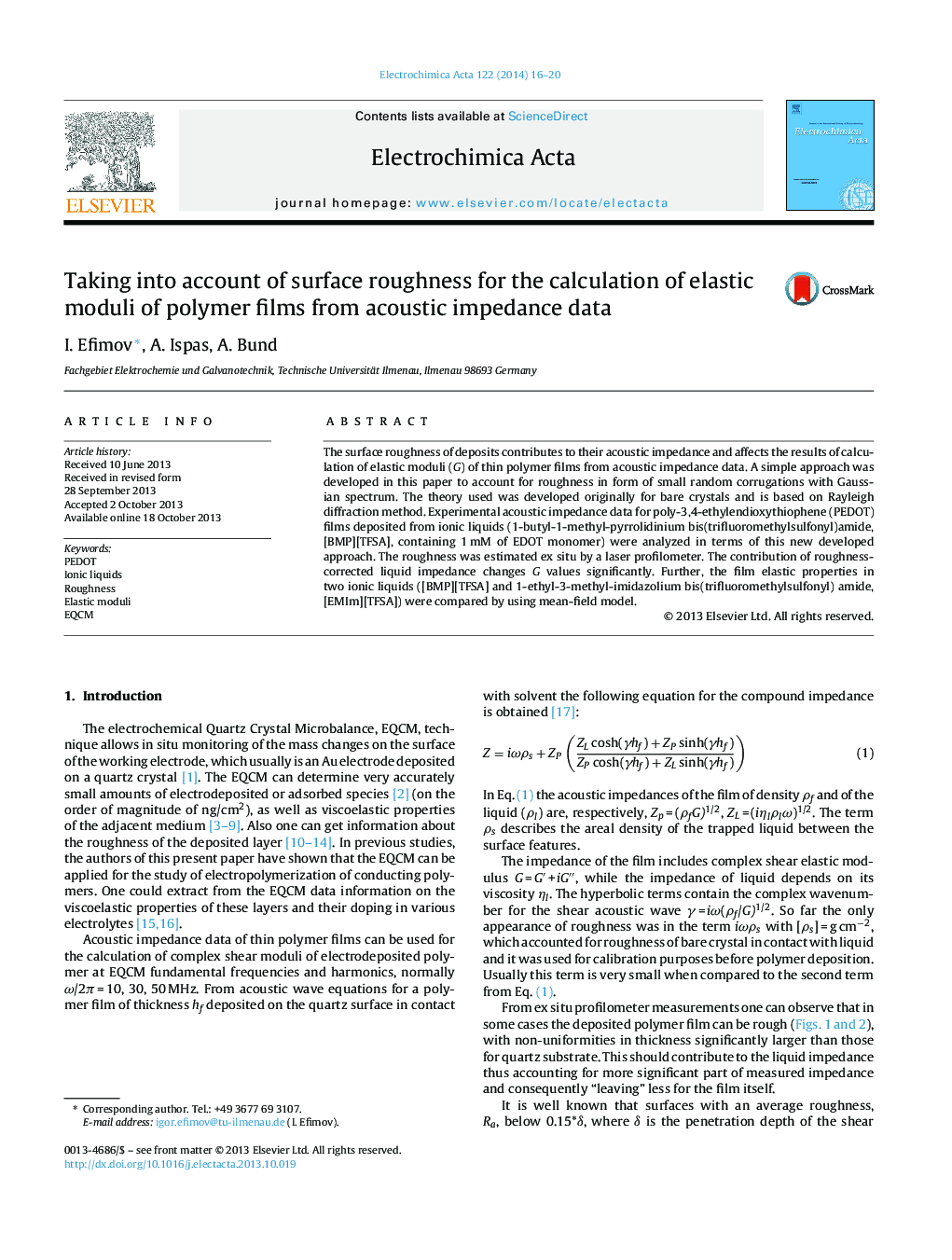| Article ID | Journal | Published Year | Pages | File Type |
|---|---|---|---|---|
| 186289 | Electrochimica Acta | 2014 | 5 Pages |
The surface roughness of deposits contributes to their acoustic impedance and affects the results of calculation of elastic moduli (G) of thin polymer films from acoustic impedance data. A simple approach was developed in this paper to account for roughness in form of small random corrugations with Gaussian spectrum. The theory used was developed originally for bare crystals and is based on Rayleigh diffraction method. Experimental acoustic impedance data for poly-3,4-ethylendioxythiophene (PEDOT) films deposited from ionic liquids (1-butyl-1-methyl-pyrrolidinium bis(trifluoromethylsulfonyl)amide, [BMP][TFSA], containing 1 mM of EDOT monomer) were analyzed in terms of this new developed approach. The roughness was estimated ex situ by a laser profilometer. The contribution of roughness-corrected liquid impedance changes G values significantly. Further, the film elastic properties in two ionic liquids ([BMP][TFSA] and 1-ethyl-3-methyl-imidazolium bis(trifluoromethylsulfonyl) amide, [EMIm][TFSA]) were compared by using mean-field model.
